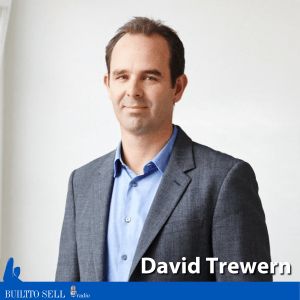About this episode
David Trewern grew DT to $10 million in annual revenue before he sold it to STW Group for almost 10 times profit after tax, getting maximum value for his business because he started to look at the world through the eyes of his would-be acquirer.
To read a transcript of this episode, click here.
Melbourne-based David Trewern grew DT, a digital advertising agency, to $10 million in annual revenue before he sold it to STW Group in 2007 for almost 10 times profit after tax.
Even more impressive than the multiple, Trewern got all of his cash up front andparticipated in the future growth of the company for the three years after the sale. Trewern was able to get maximum value for his business and preferred terms because he started to look at the world through the eyes of his would-be acquirer. STW had made a major acquisition in Melbourne and were putting together a 200-person agency with around $30 million in revenue. The only problem was the Melbourne agency didn’t have much of a digital team in 2007, as digital advertising was exploding.
Trewern reasoned that STW could buy his company as an insurance policy of sorts against the bet they were making in Melbourne. In this episode, you’ll learn:
- The definition of accretive and how it can help you boost the value of your business.
- How future-proofing the buyer impacts your value.
- Four things big companies like STW look for in an acquisition.
- How to think like a buyer.
- How to make yourself redundant by using the technique of a master chef.
Can Your Business Survive Without You?
DT used to be call David Trewern Design but Trewern re-branded to make his business appear less dependent on him personally – a key step in improving the value of any company. “You-proofing” your company is something we’ll tackle in Module 7 (Hub & Spoke) of The Value Builder System™ – a 12-step process designed to drive up the value of your company by 71% on average. Get started for free by completing the Value Builder questionnaire now.
Trewern’s Secret Weapon
As you’ll hear on the episode, Trewern’s advisor through his exit was a sage mentor named Geoff Green, the author of The Smart Business Exit. Green is a Melbourne-based Certified Value Builder™ who guided Trewern through his transformation from a graphic designer to the owner of a highly sought after digital agency. If you would like to have your own Green in your corner, complete the Value Builder questionnaire and we’ll connect you to a Certified Value Builder™ in your area. If you’re an advisor and would like to be Certified to deliver our program, request more information.

About Our Guest
David Trewern is an Australian digital marketing and technology pioneer, entrepreneur, innovator and investor. After graduating with a Bachelor of Design in 1994 David traveled under scholarship to San Francisco, New York and London – visiting the global design and technology pioneers of the World Wide Web. David founded David Trewern Design (now DT) at the age of 23 with $5,000 capital. In 1997, David was awarded ‘Interface Designer of the Year’ by the AIMIA and was listed by The Age as one of Australia’s ‘30 rising stars under 30’.


